India is on its way to becoming a global power. Few other countries are as diverse or as full of opportunities and challenges as this vast democracy in Asia. So the Federal Academy for Security Policy chose Delhi and Mumbai as destinations for its 2018 Course for Senior Officials.
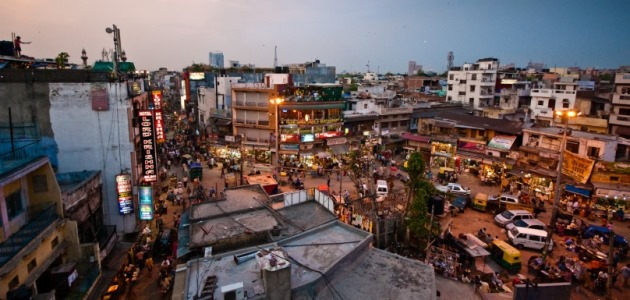
Hustle and bustle in the Indian capital of Delhi. Picture: Will Vousden / flickr / CC BY-NC-SA 2.0.
Unity in diversity – this motto strengthens India’s resolve to become a global power. A population of over 1.3 billion, a variety of religions, 23 recognised official languages and over 120 spoken dialects (some of which differ considerably from one another), centuries-old traditions alongside high-tech and modernity, appalling poverty and misery alongside astonishing wealth and prosperity... these are just some of the features of modern India, a country full of contradictions and ambitions – and a destination of the Federal Academy’s 2018 Course for Senior Officials.
Growth, growth, growth
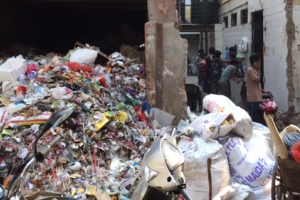
India’s economy is growing – but so are its problems. Picture: Federal Academy for Security Policy (BAKS) / Wagner.
In twenty to thirty years, India hopes to be on an equal footing with the United States and China. Political parties broadly agree that this can only happen if widespread poverty is reduced. To do this, the Modi government aims to create one million new jobs every month. Its motto is: “Growth, growth, growth...”, one might almost add, “...at any price.” Nearly 50 percent of India’s energy requirements are still met by coal, and because so many jobs are associated with coal, replacing it with renewable energy sources is not a priority. And yet, the effects of climate change will be particularly grave for the Indian subcontinent. Global warming is melting the glaciers in the Himalayas, which will lead to increased drinking water shortages in the region. Furthermore, rising sea levels will especially affect Bangladesh, leading to increased migration to India.
Difficult neighbours
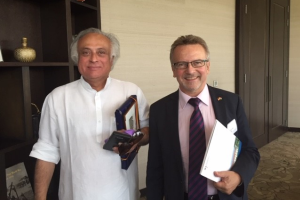
Talks with national decision-makers were on the agenda: Karl-Heinz Kamp, President of the Federal Academy for Security Policy, with Jairam Ramesh, former Indian environment minister and member of India’s upper house of parliament. Picture: Federal Academy for Security Policy (BAKS) / Wagner.
India has difficult relations with its neighbours (with the exception of Nepal and Bhutan). In particular, the hasty secession and creation of Pakistan in 1947 has left deep wounds. To this day, the associated Kashmir conflict remains unresolved, as Pakistan and India still make competing territorial claims on the province. Almost on a daily basis, skirmishes between the two sides take place along the Line of Control, the military line between the Pakistani and Indian occupied parts of the province. Lives are regularly lost in these skirmishes. Pakistan makes territorial claims on Kashmir and strives for an international solution, whereas India regards the dispute primarily as an ideological issue and considers a bilateral solution with Pakistan to be the best way forward. Since the two approaches are incompatible, the conflict is unlikely to be resolved in the foreseeable future. Furthermore, with general elections to be held in India in April or May 2019, the rhetoric surrounding the conflict is likely to become even tougher, at least for now.
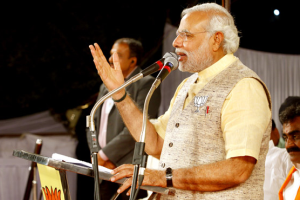
Prime Minister Modi sees India on an equal footing with the United States within thirty years. Picture: Narendra Modi / flickr / CC BY-SA 2.0.
India also has tense relations with China, whose population will be surpassed by India’s in just two years. India is very concerned about the Chinese policy of expansion. The main shipping route between Asia, Africa and Europe runs past the southern tip of India. The Indian Ocean borders directly on the South China Sea, where China is involved in territorial conflicts with Southeast Asian countries. China is creating irreversible facts in that region by building islands and installing military facilities on them. Moreover, India sees the firm friendship that China has developed with Pakistan as part of its policy of isolation. China’s new Silk Road project (a vast investment programme known as the Belt and Road Initiative/BRI) is seen by India as an ingenious power projection strategy. So far, however, India has lacked the financial resources to take any countermeasures. The North–South Transport Corridor (NSTC), primarily founded by India and Russia, is to run from Moscow via Central Asian states to Iran, and then by sea to Mumbai, bypassing China and Pakistan. But so far this route seems to be more of an idea than a reality.
A land of superlatives
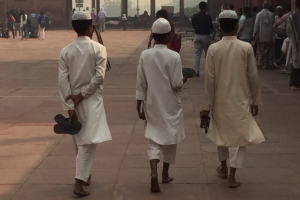
Three boys in front of the Jama Masjid in Delhi, Asia’s biggest mosque: India is a diverse country, and not just in terms of religion. Picture: Federal Academy for Security Policy (BAKS) / Wagner.
The capital Delhi, the seat of India’s central government, is impressively large, diverse and busy. The business and financial metropolis of Mumbai, a mega-city with a population of some 23 million, is considerably larger still, and hard to beat in terms of vibrancy and diversity. Rich and poor live here side by side. Only a few kilometres separate Asia’s largest slum from the city’s most expensive residential areas and sleek office buildings. The productivity of the city attracts people from all over India and beyond to seek their fortune. Mumbai is also the largest port town in South Asia, and India’s gateway to the world. Contrasts are a dominant feature of Mumbai, reminding us of how ambitious the motto unity in diversity really is.
Given its huge and ever increasing population, India must always be thought of in terms of superlatives. Both its challenges and opportunities are vast. Key strengths of the world’s largest democracy are its tolerance, pluralism, rule of law, and clear commitment to multilateralism. This makes India an attractive partner in the global interplay of forces.
High hopes of Germany
On the other hand, India expects much of Germany and Europe. It has repeatedly emphasised the need for a strong Germany within a strong Europe. With Brexit in mind, India is pinning its hopes on German leadership and responsibility. Incredible India is a land of dreams and dreamers. It is a nuclear power, yet also has terrible poverty. It is becoming a global power, yet is still a developing country. And it is looking for strong partners – with a clear preference for Germany.
Author: Peter Härle
